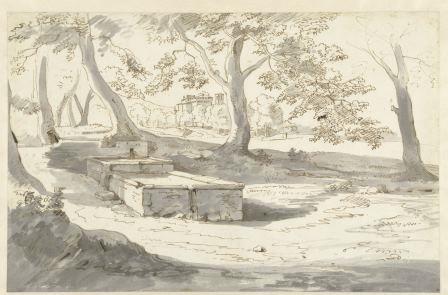Recommendation
In a letter dated 19 October 2016 the Minister of Education, Culture and Science (hereinafter referred to as the Minister) asked the Restitutions Committee (hereinafter referred to as the Committee) for advice about the application for restitution of the drawing View of the Abbey of Grottaferrata (hereinafter referred to as the drawing) by Caspar van Wittel. The application was submitted to the Minister by the Holocaust Claims Processing Office (HCPO) in New York (hereinafter referred to as the HCPO) on behalf of the heirs of Michael Berolzheimer (hereinafter referred to as the Applicants). Since 1975 the drawing has been among the holdings of the Dutch State and is currently in the Rijksmuseum in Amsterdam (hereinafter also referred to as the Museum).
